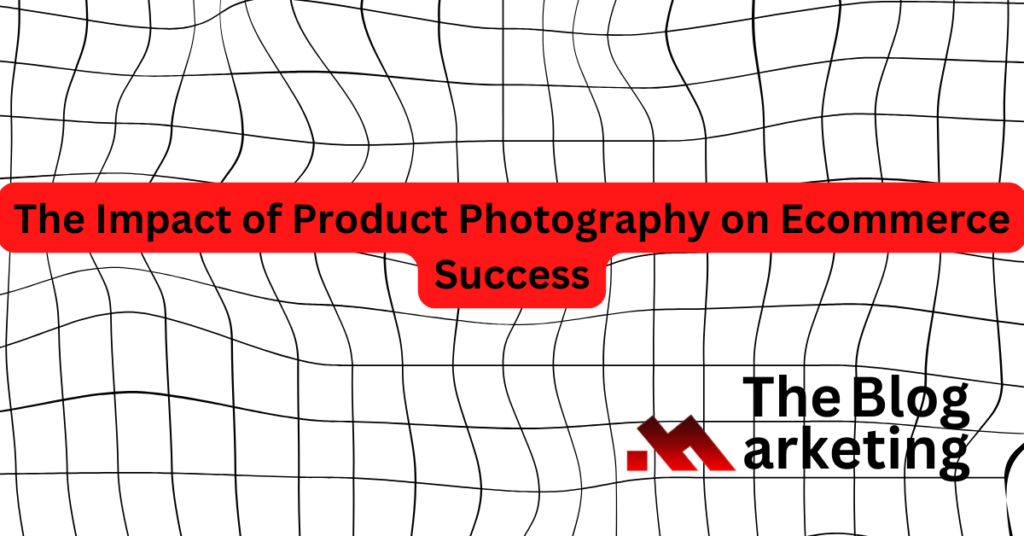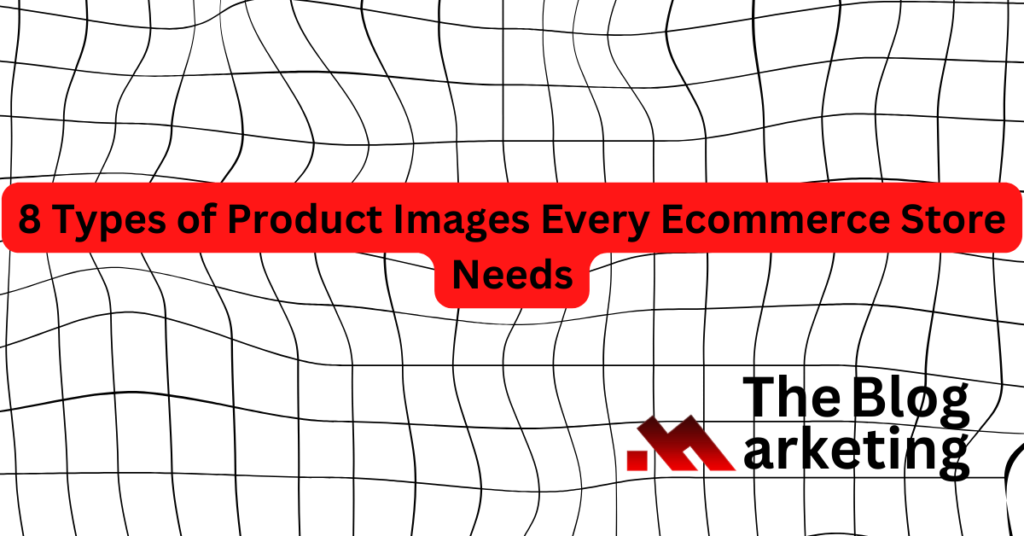In the world of ecommerce, product photos are much more than just decorative images on a website. High-quality product photography is essential for conveying important information about products, capturing customer attention, and driving sales.
Product photos are the only way online shoppers can interact with your products before they purchase. So, using compelling, effective product images can mean the difference between a product flying off the virtual shelves or being ignored entirely. Let’s explore the immense impact product photography has on ecommerce success.
The Importance of High-Quality Photos

In the ecommerce industry, consumers expect lush, crisp, detailed product photos that accurately depict color, texture, fit, size, and other attributes. So, investing in product photography not only brings out the best in a product but gives the customer confidence about making a purchase since they can inspect the item virtually from all angles.
Engaging the Customer
Product photos allow customers to inspect the product in a manner similar to walking into a physical store. It is important that your images clearly communicate a product’s benefits, features, and aesthetics, as it makes the customer feel fully informed to make a purchase decision. You can creatively sell the benefits of your product with lifestyle images and close-up detailed shots.
Building Trust
When done correctly, product photography establishes trust and credibility. Customers want assurance they are making the best decision, so putting out high-quality photographs of your products adds an element of professionalism and reliability to your brand image. Product photos also build trust by representing items accurately, without exaggeration or embellishment. What the customer sees is what they can expect to receive. This would prevent bait-and-switch scenarios, high returns, and negative reviews.
Storytelling
Product photos can convey a story about lifestyle and identity. For example, Images placing your products in the right context, environments, and use cases shows how relevant your product is to the ideal customer. Creating interesting lifestyle shots builds an emotional bond between customer and product that goes beyond specs and features. Your customers can imagine themselves using the product and this adds to the overall purchase experience.
Simplifying Purchase Decisions
It goes without saying that photography streamlines the evaluation process. Customers can instantly see multiple detailed views of a product in seconds that could have been missed in a physical situation. Customers can zoom in on photos from their mobile allowing microscopic inspection, relieving uncertainties about fit, texture, color, and scale.
Another advantage of photos is ease of doing side-by-side comparisons, so customers can weigh all options. In other words, photos reduce the risk of purchase regret and simplify returns if items do not meet expectations.
Enhancing SEO
Another interesting benefit of investing in product photography is the direct contribution it has on search engine optimization and visibility. Photos allow search engines to better crawl and index site pages through image filenames, alt text, tags, etc. Images help communicate what pages are about and improve click-through-rates from SERPs. So, integrating photos in site content, blogs, and social channels amplifies discovery and drives external traffic. Overall, photography strengthens on-page and off-page SEO measures for sustainable growth.
Conversion Optimization
Images also play a role in increasing the conversion rate of your website. It is human psychology to react strongly to visuals, so photography grabs their attention and focus where text alone may not. Photos reduce friction by quickly answering shoppers’ questions and conveying critical information. Here’s how product photography affects conversion rates:
- Increased Click-Through Rates: Eye-catching images encourage users to explore product pages, leading to higher click-through rates from search engine results, social media posts, and email marketing campaigns.
- Reduced Bounce Rates: Engaging product images keep visitors on your site longer and reduce the likelihood of them leaving immediately (bouncing). When users stay and browse your products, they are more likely to make a purchase.
- Higher Add-to-Cart Rates: High-quality product images inspire confidence and reduce hesitation. Shoppers are more likely to add items to their cart when they can clearly see what they’re getting.
- Improved Conversion Rates: With an emotional connection established through images and all product details readily available, customers are more likely to convert and complete their purchase.
Cost-Effective Marketing
Undoubtedly, photography is a marketing asset that pays dividends. You fully own custom photography, so it never expires like licensed stock and a s bonus, Images can integrate seamlessly into diverse applications, from your ecommerce store to catalogs, ads, social content and more.
In other words, Investing in product photography eliminates the need for repeated photo shoots. The style stays cohesive while the usage is highly versatile. For these reasons, photography delivers a huge impact for modest upfront time and cost.
Optimizing Product Photography
If you already have photos on your ecommerce website already, how can you maximize them for your success? Here are some optimization tips businesses should follow for the best results:
High-Resolution Images: This is perhaps the most important tip. Do not just take shots with your phone. Admittedly, mobile devices are fast becoming comparable to some digital cameras but high-resolution images are crucial to showcase product details clearly. Customers often zoom in on product images to examine them closely so you need images that maintain its quality in these types of situations..
Multiple Angles: Presenting multiple angles of a product allows customers to view it from different perspectives so be sure to include shots of the front, back, sides, top, and bottom, if applicable. This comprehensive view helps customers gain a better understanding of the product.
Lifestyle and Context Images: In addition to standalone product shots, consider including lifestyle or context images. These photos show the product in use or within a relevant environment. For example, a clothing brand might show a model wearing their clothes in various settings. Context images help customers visualize how the product fits into their lives.
White Backgrounds: Clean and simple white backgrounds are common for product photography. They eliminate distractions and draw the viewer’s focus to the product itself. However, some brands may choose different background styles to match their aesthetics.
Image Optimization: Ensure that your product images are optimized for web use. This includes compressing images to reduce file size for faster loading times. Slow-loading pages can lead to user frustration and higher bounce rates.
Mobile-Friendly: Given the increasing use of smartphones for online shopping, make sure that your product images display well on mobile devices. Images should adapt to various screen sizes without sacrificing quality or important details.
Consistent Branding: Maintain a consistent style and branding in your product photography. This includes using the same background color, lighting, and image editing style across all product images. Consistency reinforces your brand identity.
Product Videos: In addition to images, consider incorporating product videos. Videos can provide a more dynamic and immersive experience, allowing customers to see the product in action or get a closer look at its features.
User-Generated Content: Encourage customers to share their own images and reviews of your products. This social proof can enhance trust and engagement. User-generated content often resonates more with potential buyers since it reflects the experiences of real customers.
A/B Testing: Continuously assess the impact of your product images by conducting A/B tests. Compare different image styles or layouts to see which ones lead to better conversion rates. Data-driven decision-making can help you refine your product photography strategy over time.
The Future of Product Photography
As technology advances, product photography in ecommerce is also evolving. Virtual reality (VR) and augmented reality (AR) are becoming more prominent in the industry. These technologies allow customers to interact with products in immersive ways. For instance, customers can virtually try on clothing or place furniture in their living spaces using AR. Such innovations can further enhance the online shopping experience and reduce uncertainty about product purchases.
The bottom line is product photography is a pivotal component of ecommerce success. It directly impacts conversion rates, brand identity, and customer engagement. By investing in high-quality, consistent, and customer-focused product imagery, businesses can build trust, improve user experience, and ultimately drive sales. As technology continues to advance, the role of product photography in ecommerce will only become more significant, offering new ways to engage and convert online shoppers.
Investing in Professional Photography
To truly harness the power of product photography, consider opting for professional photographers or invest in high-quality photography equipment and studio setups. The expense of professional photography is often outweighed by the increased sales and improved brand reputation it brings. Professional photographers have the expertise to capture products in the best possible light, ensuring that your e-commerce site exudes professionalism and reliability.
Megvi Digital Photography Scores the highest rates in product videography and photography, with over 100+ satisfied brands.
Conclusion:
Clearly, there is no overstating the massive influence of product photography on ecommerce success. Compelling product photos are valuable assets, not decorative fluff. Photography is the medium that introduces customers to merchandise and convinces them to buy. Investing in professional-grade product photography pays measurable dividends through higher conversions, revenue, and customer satisfaction. Simply put, quality photography sells. For online retailers, photography is not just about aesthetics, but rather creating the tangible buying experience today’s consumers demand.



